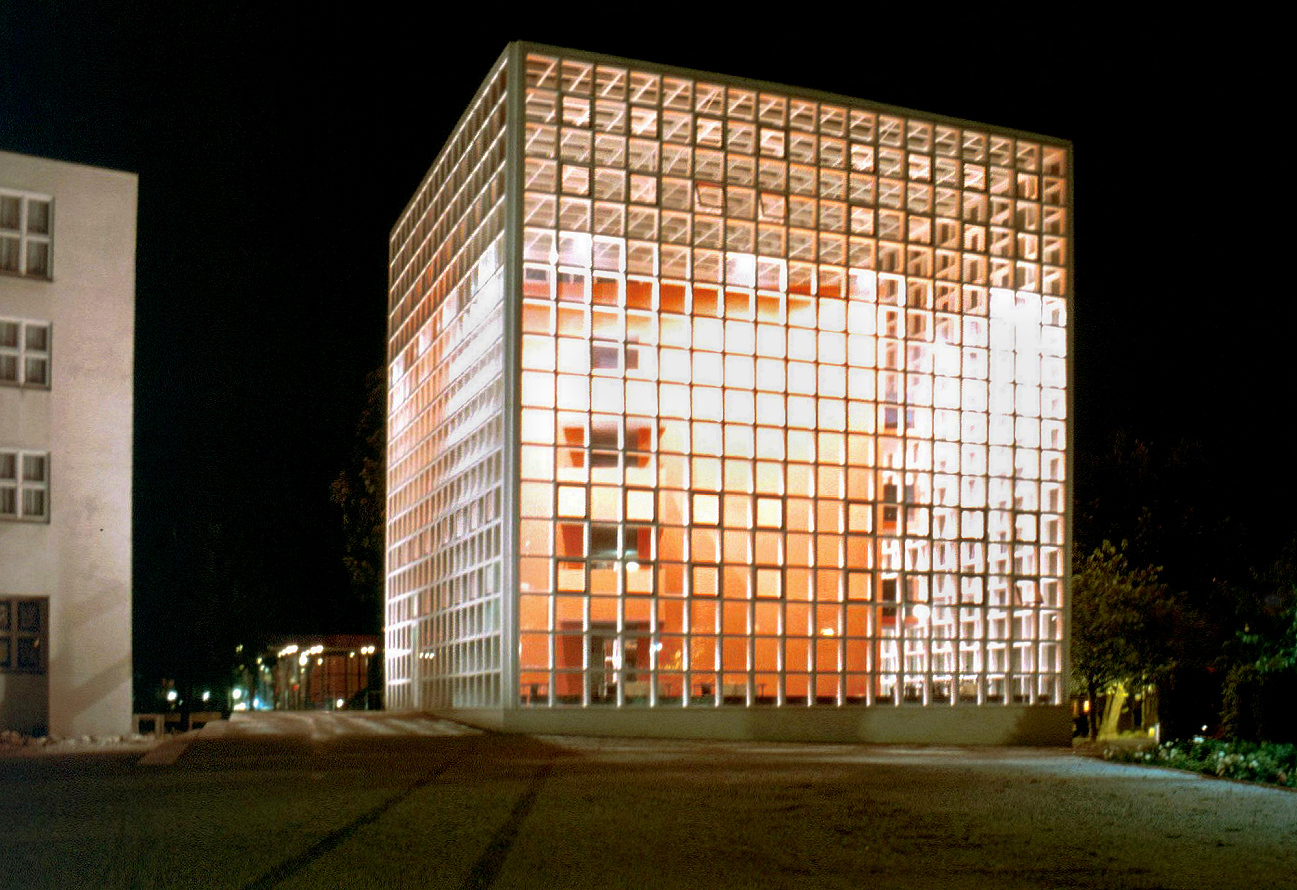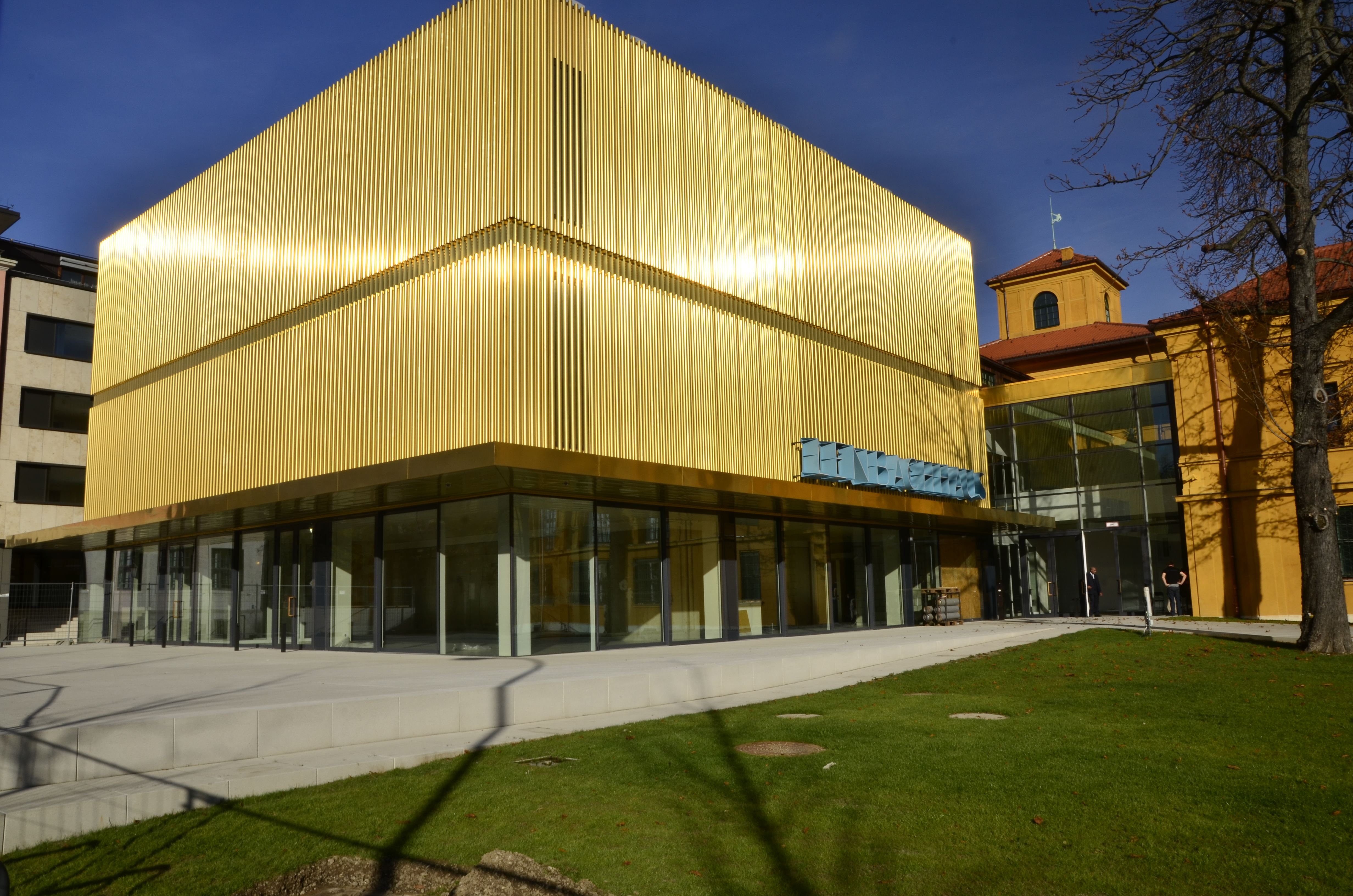|
Hubert Haider
__NOTOC__ Hubert Haider (1879–1971) was a German landscape painter. Haider was born 11 February 1879 at Munich, son to the Munich painter Karl Haider and his first wife Katharina, née Brugger (died 1882), niece to the sculptor Friedrich Brugger. He was grandson of the forester draughtsman Max Haider. His half-brother, Ernst Haider, son of his father's 1890 second marriage to Ernestine Schwarz, was also a painter. After attending the Gymnasium Dillingen (grammar school), he transferred in 1891–92 to Munich's Maximiliansgymnasium. From 1894 to 1902 he lived at the village of Eicherloh, between Munich and Erding, and from 1914 at Altötting, Schliersee and Munich. He developed an artistic relationship with the older landscape painter Edmund Steppes, and through him with his son-in-law Karl Alexander Flügel (1890-1967). He was a member of the Munich Artists' Cooperative and the Reichsverband bildender Künstler Deutschlands (Reich Association of Visual Artists). His pa ... [...More Info...] [...Related Items...] OR: [Wikipedia] [Google] [Baidu] |
Munich
Munich ( ; german: München ; bar, Minga ) is the capital and most populous city of the States of Germany, German state of Bavaria. With a population of 1,558,395 inhabitants as of 31 July 2020, it is the List of cities in Germany by population, third-largest city in Germany, after Berlin and Hamburg, and thus the largest which does not constitute its own state, as well as the List of cities in the European Union by population within city limits, 11th-largest city in the European Union. The Munich Metropolitan Region, city's metropolitan region is home to 6 million people. Straddling the banks of the River Isar (a tributary of the Danube) north of the Northern Limestone Alps, Bavarian Alps, Munich is the seat of the Bavarian Regierungsbezirk, administrative region of Upper Bavaria, while being the population density, most densely populated municipality in Germany (4,500 people per km2). Munich is the second-largest city in the Bavarian dialects, Bavarian dialect area, ... [...More Info...] [...Related Items...] OR: [Wikipedia] [Google] [Baidu] |
Upper Bavaria
Upper Bavaria (german: Oberbayern, ; ) is one of the seven administrative districts of Bavaria, Germany. Geography Upper Bavaria is located in the southern portion of Bavaria, and is centered on the city of Munich, both state capital and seat of the district government. Because of this, it is by far the most populous administrative division in Bavaria. It is subdivided into four planning regions (''Planungsverband''): Ingolstadt, Munich, Bayerisches Oberland (Bavarian Highland), and Südostoberbayern (South East Upper Bavaria). The name 'Upper Bavaria' refers to the relative position on the Danube and its tributaries: downstream, Upper Bavaria is followed by Lower Bavaria, then Upper Austria, and subsequently Lower Austria. ''Landkreise'' (districts): * Altötting * Bad Tölz-Wolfratshausen * Berchtesgadener Land * Dachau * Ebersberg * Eichstätt * Erding * Freising * Fürstenfeldbruck * Garmisch-Partenkirchen * Landsberg * Miesbach * Mühldorf * Munich (''München'') ... [...More Info...] [...Related Items...] OR: [Wikipedia] [Google] [Baidu] |
German Male Painters
German(s) may refer to: * Germany (of or related to) **Germania (historical use) * Germans, citizens of Germany, people of German ancestry, or native speakers of the German language ** For citizens of Germany, see also German nationality law **Germanic peoples (Roman times) * German language **any of the Germanic languages * German cuisine, traditional foods of Germany People * German (given name) * German (surname) * Germán, a Spanish name Places * German (parish), Isle of Man * German, Albania, or Gërmej * German, Bulgaria * German, Iran * German, North Macedonia * German, New York, U.S. * Agios Germanos, Greece Other uses * German (mythology), a South Slavic mythological being * Germans (band), a Canadian rock band * "German" (song), a 2019 song by No Money Enterprise * ''The German'', a 2008 short film * "The Germans", an episode of ''Fawlty Towers'' * ''The German'', a nickname for Congolese rebel André Kisase Ngandu See also * Germanic (other) * Germa ... [...More Info...] [...Related Items...] OR: [Wikipedia] [Google] [Baidu] |
19th-century German Male Artists
The 19th (nineteenth) century began on 1 January 1801 ( MDCCCI), and ended on 31 December 1900 ( MCM). The 19th century was the ninth century of the 2nd millennium. The 19th century was characterized by vast social upheaval. Slavery was abolished in much of Europe and the Americas. The First Industrial Revolution, though it began in the late 18th century, expanding beyond its British homeland for the first time during this century, particularly remaking the economies and societies of the Low Countries, the Rhineland, Northern Italy, and the Northeastern United States. A few decades later, the Second Industrial Revolution led to ever more massive urbanization and much higher levels of productivity, profit, and prosperity, a pattern that continued into the 20th century. The Islamic gunpowder empires fell into decline and European imperialism brought much of South Asia, Southeast Asia, and almost all of Africa under colonial rule. It was also marked by the collapse of the large S ... [...More Info...] [...Related Items...] OR: [Wikipedia] [Google] [Baidu] |
19th-century German Painters
The 19th (nineteenth) century began on 1 January 1801 ( MDCCCI), and ended on 31 December 1900 ( MCM). The 19th century was the ninth century of the 2nd millennium. The 19th century was characterized by vast social upheaval. Slavery was abolished in much of Europe and the Americas. The First Industrial Revolution, though it began in the late 18th century, expanding beyond its British homeland for the first time during this century, particularly remaking the economies and societies of the Low Countries, the Rhineland, Northern Italy, and the Northeastern United States. A few decades later, the Second Industrial Revolution led to ever more massive urbanization and much higher levels of productivity, profit, and prosperity, a pattern that continued into the 20th century. The Islamic gunpowder empires fell into decline and European imperialism brought much of South Asia, Southeast Asia, and almost all of Africa under colonial rule. It was also marked by the collapse of the large S ... [...More Info...] [...Related Items...] OR: [Wikipedia] [Google] [Baidu] |
Painters From Munich
Painting is the practice of applying paint, pigment, color or other medium to a solid surface (called the "matrix" or "support"). The medium is commonly applied to the base with a brush, but other implements, such as knives, sponges, and airbrushes, can be used. In art, the term ''painting ''describes both the act and the result of the action (the final work is called "a painting"). The support for paintings includes such surfaces as walls, paper, canvas, wood, glass, lacquer, pottery, leaf, copper and concrete, and the painting may incorporate multiple other materials, including sand, clay, paper, plaster, gold leaf, and even whole objects. Painting is an important form in the visual arts, bringing in elements such as drawing, composition, gesture (as in gestural painting), narration (as in narrative art), and abstraction (as in abstract art). Paintings can be naturalistic and representational (as in still life and landscape painting), photographic, abstract, narrati ... [...More Info...] [...Related Items...] OR: [Wikipedia] [Google] [Baidu] |
De Gruyter
Walter de Gruyter GmbH, known as De Gruyter (), is a German scholarly publishing house specializing in academic literature. History The roots of the company go back to 1749 when Frederick the Great granted the Königliche Realschule in Berlin the royal privilege to open a bookstore and "to publish good and useful books". In 1800, the store was taken over by Georg Reimer (1776–1842), operating as the ''Reimer'sche Buchhandlung'' from 1817, while the school’s press eventually became the ''Georg Reimer Verlag''. From 1816, Reimer used the representative Sacken'sche Palace on Berlin's Wilhelmstraße for his family and the publishing house, whereby the wings contained his print shop and press. The building became a meeting point for Berlin salon life and later served as the official residence of the president of Germany. Born in Ruhrort in 1862, Walter de Gruyter took a position with Reimer Verlag in 1894. By 1897, at the age of 35, he had become sole proprietor of the h ... [...More Info...] [...Related Items...] OR: [Wikipedia] [Google] [Baidu] |
Braunschweig University Of Art
The Braunschweig University of Art (Hochschule für Bildende Künste Braunschweig, HBK) is the second largest College of Fine Arts in Germany. History The history goes back to the “Zeichnen-Instithut” (Drawing Institute) founded by the Brunswick Business Association in 1841 and which was first led by Johannes Selenka. From that Drawing Institute, the state-approved urban “Handwerker-Kunstgewerbeschule” (Artisan Arts and Crafts School) developed via various stages, and shortly thereafter the “Meisterschule des Deutschen Handwerks” (Master School of German Craftsmanship) developed. The real precursor of the HBK was founded in 1952: the urban ''Werkkunstschule Braunschweig'' (School of applied art). It became the ''Staatliche Hochschule für Bildende Künste'' (State College of Fine Arts) – abbreviated as SHFBK - and in 1978 it became the HBK. The SHFBK was already equated with the academic universities of Lower Saxony since 1972 and a few years later it was included ... [...More Info...] [...Related Items...] OR: [Wikipedia] [Google] [Baidu] |
Hans Vollmer
Hans Vollmer (16 November 1878 – 15 February 1969) was a German art historian. Life His father was the architect (1845-1920), his grandfather of the Hamburg marine painter and sculptor Adolph Friedrich Vollmer (1806–1875). He was the older brother of the painter and sculptor Erwin Vollmer (1884–1973). Vollmer studied art history, history of sciences and philosophy in Berlin and Munich. In 1906 he was awarded a doctorate by Heinrich Wölfflin in Berlin with a thesis on ''Schwäbische Monumentalbrunnen von der Gotik bis zum Klassizismus'' (Swabian monumental fountains from the Gothic to the Classicism). Since April 1, 1907 he was employed in the editorial office of the '' Thieme-Becker ''Allgemeiner Künstlerlexikon'' at the publishing house E. A. Seemann in Leipzig, in 1923 he took over the editorial management and became editor of the Thieme-Becker company. He worked as the main contributor, supported by a small editorial staff, until the completion of the 37-volume wo ... [...More Info...] [...Related Items...] OR: [Wikipedia] [Google] [Baidu] |
Lenbachhaus
The Lenbachhaus () is a building housing an art museum in Munich's '' Kunstareal''. The building The Lenbachhaus was built as a Florentine-style villa for the painter Franz von Lenbach between 1887 and 1891 by Gabriel von Seidl and was expanded 1927–1929 by Hans Grässel and again 1969–1972 by Heinrich Volbehr and Rudolf Thönnessen. Some of the rooms have kept their original design. The city of Munich acquired the building in 1924 and opened a museum there in 1929. The latest wing was closed to the public in 2009 to allow the expansion and restoration of the Lenbachhaus by Norman Foster; the 1972 extension was demolished to make way for the new building. The museum reopened in May 2013. The architect placed the new main entrance on Museumsplatz in front of the Propylaea. The new facade, clad in metal tubes made of an alloy of copper and aluminum, will weather with time. The gallery The gallery contains a variety of works by Munich painters and contemporary artists, ... [...More Info...] [...Related Items...] OR: [Wikipedia] [Google] [Baidu] |





